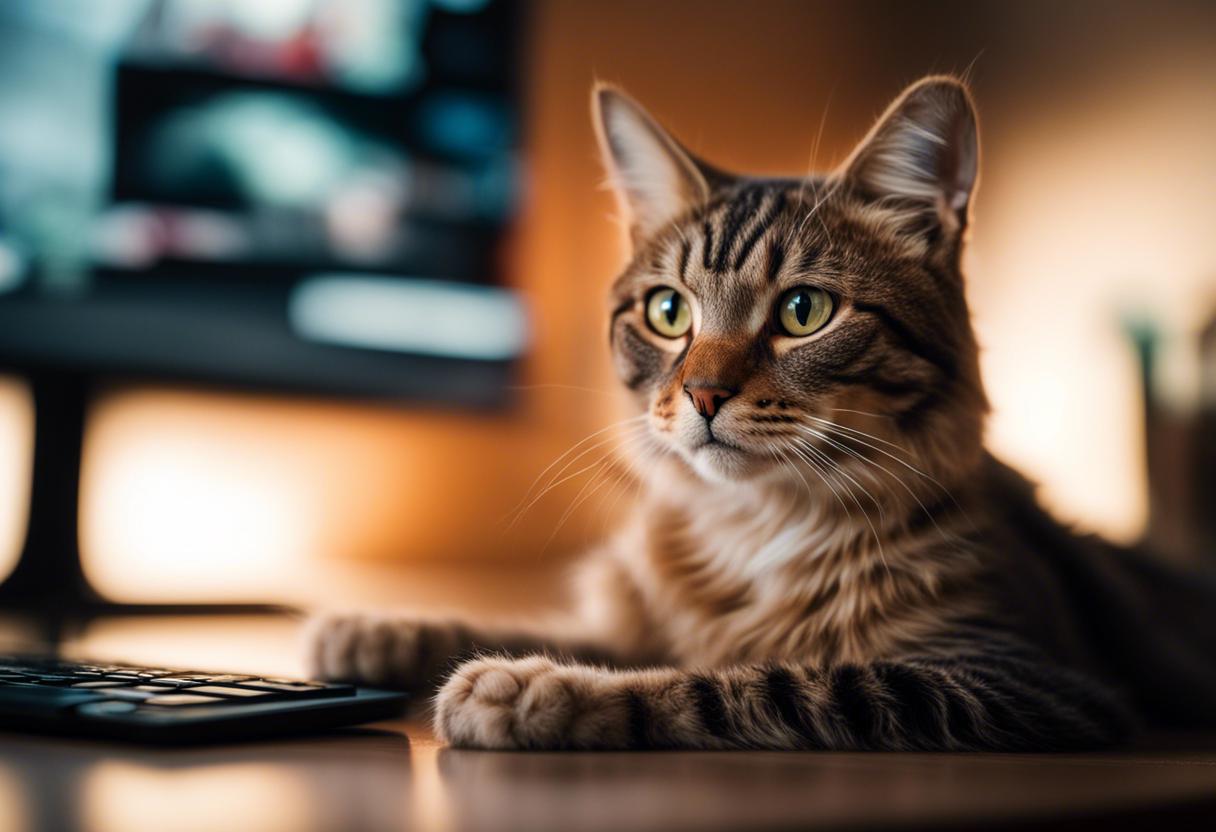The rather underappreciated category within the film festival circuit that solely caters to one of the most disregarded genres in motion picture’s narrative is scarcely discussed. The Cat Video Fest of 2024, presently on its American tour, made a pit stop at one of New York’s prestigious cinemas, previously this week. Ethan Shanfeld, a reporter for the prominent Variety magazine, witnessed the event. Whilst he confesses that the happenings feel more like an anthology feature rather than a bona fide festival comprising a 73-minute compilation of cat videos procured globally, it comes as a striking revelation that the genre, having grossed $280,000 (equivalent to over €250,000), persists to endure.
Which other online video genre could bring together such substantial audiences for a communal large-screen viewing? Most survey results indicate that the population, albeit erroneously, favour dogs over the sophisticated cats. Dog-related searches generally dominate internet search engines over those for cats. Nevertheless, the excitement for canine clips on YouTube or TikTok does not match up. No grumpy Labradoodle could ever challenge the late and iconic Grumpy Cat, that had been a relentless source of online humour from 2012 until her unfortunate demise in 2019. Advocates of dogs may rejoice at the fact that none within their ranks has ever managed to replicate the mildly infuriating “I can has Cheezburger?” trend which featured cats depicted in humorous situations with a caption in child-like speech, originating in 2007.
Cultural reverence for cats on the internet mirrors their revered status in Ancient Egypt. The esteemed Museum of the Moving Image in New York held an exhibition in 2015 titled, How Cats Took Over the Internet. Jason Eppink, the associate curator, suggested to The Guardian that it served as a snapshot of the internet’s history, beyond just hosting delightful images. Looking back to 1998, when the web, in its initial stage, bore semblance to mediaeval times, one can recall a fleeting fascination with a site called Cat Scan. The website’s innovation lay in urging individuals to scan their cats using office equipment, resulting in amusing images for public amusement.
Cat Scan didn’t exactly demonstrate the most benevolent treatment towards felines, sparking backlashes from those concerned that cats like Tabby or Biff could be left traumatised, or at worst, lose their sight. The outrage this platform would possibly stir nowadays cannot be overstated. The faint-hearted protester who perceives cruelty in the most innocent video clip is a familiar character in the realm of cat videos – and any similar realm for that matter. Reactions range from stern warnings about the danger of placing cats near TVs, which could potentially explode and cause harm, to threats of reporting incidents to animal services for the supposedly ulcer-inducing practice of feeding brown food to cats.
There’s also another group, consisting mainly of Americans, expressing their concern over cats contaminating workplaces. Some people just love to fuss over everything. Nevertheless, Cat Scan dwindled away making way for sensations like the always puzzled Grumpy Cat, the short-legged Lil Bub and the friendly, curious Maru, who is still with us after 17 years. In addition, there’s the charming Bodega Cats account on X, offering enjoyable snapshots of creatures in American convenience stores. Those previously voiced erroneous arguments about pornography making up 80 percent of all internet traffic could likely come up with similar untruths about cat videos.
The filming of both activities dates back to the advent of the camera. The fusspots, no doubt, would stand against the act of fitting cats with boxing gloves in the 1894 silent film “The Boxing Cats”. “The Sick Kitten”, from a few years later, in which a little girl gives what could perhaps just be milk, disguised as “medicine”, to her seemingly contented pet, stands as an uncommon instance of a film that wouldn’t need any modification to enjoy the same success it had over 120 years ago. It’s not difficult to envision #SickKitten promoting his spin-off web series at Comic-Con. Maybe that little guy was better off.
It’s worth pondering why the phenomenon persists. JD Vance might throw around the term “childless cat ladies” as an unchallenged pejorative, but devotees of cats, regardless of whether they have offspring, continue to command an astonishing share of internet attention. Dogs, goldfish and parakeets not quite so much. One conjecture contends that cats’ more humanoid facial structures make them more relatable and thus simpler to anthropomorphise. Perhaps. However, pugs probably outperform them in this regard. Another proposal implies that with their superior autonomy compared to dogs, cats find it easier to establish individual personalities.
There’s a crucial difference between cats and us homo sapiens that is interesting to note: it’s relatively simple to envision a dog – clumsily trotting forward, tongue hanging out, yapping at the ethers – as possessing something akin to a witty disposition. Felis catus, not quite. The bulk of the cat videos we find amusing take advantage of the cat’s seemingly unflappable sombreness as it gets entangled in bizarre situations like getting their head stuck in a packet of crisps or toppling the Christmas tree. They emanate the energy of Buster Keaton. They emulate Bill Murray. They resemble Steven Wright. They’ve maintained an unchanging stoic demeanour since the times of the pharaohs, and they’ll continue to maintain it eternally.

